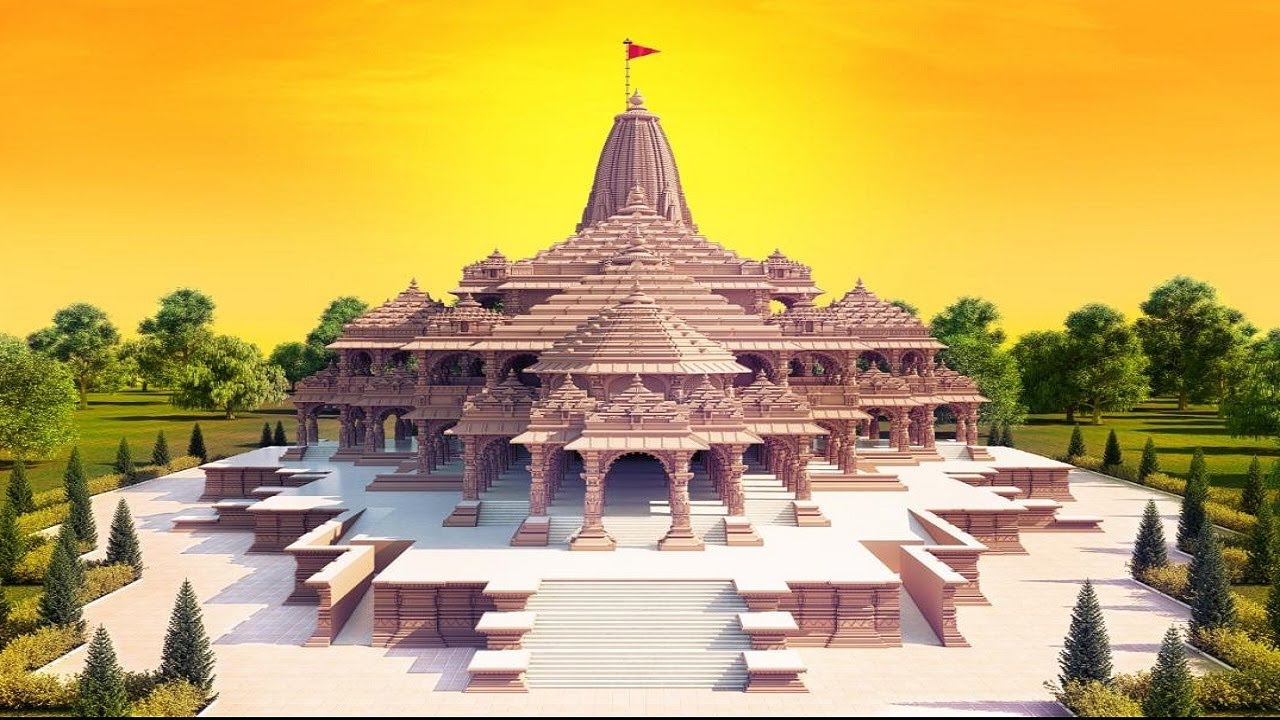
The Chosen Monarch: Ram Bhagwaan's Birth Forecasts a Majestic Rule
by Shabri Prasad Singh / 13 January 2024Narada, often is described as the “Bull amongst all Sages” in the Bibek Debroy version of the Valmiki Ramayana which I cling to in times of extreme despair, which is quite often. Perhaps, it be fate that I write this opinion piece on a Sunday the day in the Hindu and Gregorian Calendar as the day of the Sun, Surya, and who was the king descended from the line of Kings of the Suryavanshi’s, was Bhagwaan Shri Ram. This day of rest is dedicated to Lord Rama. However, Did Ram get much rest before He was consecrated? the answer is No. he was fated to kill Ravana, to kill the soul of evil, to do good, to establish Dharma, to be King and to establish a Ram Rajya…. a Kingdom of peace and prosperity.
Neither political parties are doing any favour to anyone and to Ram, His values, His teachings, His Philosophy, His fairness and his outlook toward the world. Are they letting Him rest before His Consecration ceremony on the 22nd of January??
We are so close, yet again so far….
Can Ram Bhagwaan Rest??? Yes, there is the inauguration of the grand Ram Mandir in Ayodhya in a few days, years of anguish, disappointments, deaths, and riots, on both sides by that I do mean between people across the world and India, between Hindus and Muslims, between political parties, a clash between ideologies was there and now is getting even dirtier. Why INDIA BLOC and BJP?
Can you all not see, Bhagwaan Ram does not differentiate, ask Mata Shabri. She was a Shudra who fled from her home in the forests, did Seva for Her Guru, took care of the Ashram and met Divine Ram Himself because of faith. He ate her “Jhoothe Ber” for Her devotion and love. Coming back to today, my allegiance is with India. If a divine Mandir is being inaugurated by the PM, what seems to be the controversy?
Why will those invited not attend?
Leave the Politics and the vote bank for once, and unite under the Dhwaj or Banner or Flag of India which is not just Saffron but Green and White also. There are Mosques in India and I do feel bad that it came at the cost of another place of worship, Babri Masjid. Neither Ayodhya belongs to Muslims nor Hindus, it belongs to the people of India regardless of caste, creed, colour, sect, or religion. If the Supreme Court of India has given this verdict, then I bow my head down Sirs and Madams. Kingdoms are built, Kingdoms are destroyed and then rebuilt and then rebuilt.
It is fair to the Supreme Court. It is the only one acting like Ram not Indians I am afraid. Ram is everyone’s so is any God.
The argument that a hospital could have been built instead of a Mandir, and money is spent is flaky. In Faridabad, there is a newly built state-of-the-art Hospital Amrita Hospital, built by, Sadguru Mata Amritanandamayi Devi, inaugurated by the Prime Minister of India. As I recall there are many hospitals in Uttar Pradesh, some of the best hospitals is the Sanjay Gandhi Postgraduate Institute of Medical Sciences in Lucknow, built by the state of Uttar Pradesh in 1983 with INR 800 crores approximately. The point is that there is space, space for a hospital, a road, a Mandir, and a Mosque.
I am politically Agnostic and extremely neutral but credit goes to BJP as the Ram Mandir will be a major tourist site in the world, like the Taj Mahal. Today BJP is in power tomorrow Congress will be.
There was a Babur, a Babri, there was a Ram, a Ram Setu, there was a Lanka, and a Raavan, there was also a united India and now there is a Pakistan. You respect your Maryada and I will respect mine. That is Ram people.
All this fighting, bickering, and argument will not change the fact that there is an inauguration on the 22nd of January of the year 2024 or 2080 Vikram Samvat (the year in the Hindu Calendar) of the Ram Temple, built by Temple Trust, funded by the people of India. In the famous words of Guru Nanak “Ram Gayo, Ravan Gayo, Jaku Bhau Parvaar….” At the end of Guru Granth Sahib, Page 1429, a saying by the 9th Guru, Guru Tegh Bahadur Ji. Please go and read this verse it describes beautifully the impermanence of everything. Possessions, relations, family ties, and Kingdoms.
And quoting my book Borderline there is a poem I write, which is “Like Autumn leaves that fall so far, come winter the trees look bare and spar. Seasons change and life also turns for better or worse, things remain in a constant churn”. There is a shift, a shift of power, a growth in India, an acceptance of self-worth in Indians. Far too long have we dimmed our light. We must accept change and development, but we must also be fair, and equal, and help others. If India lacks something it is social intelligence, social equilibrium, social emotional quotient. There is a big celebration coming, it will generate revenue, can we not bask in the glory of the Sun together?
Whatever method it is being done in, there is huge excitement and pride in the hearts of millions if not billions of Indians. Religion is a by-product of faith. Whether you are from any religion, let's face it Hinduism is also a religion, a way of life, and a fluid, beautiful, and ancient philosophy. Can we not respect the Gods and say after all either in the Holy names Ram or Rahim, God is not differentiating it is us Homo Sapiens Sapiens, who are doing so.
Ram was a peace lover and was destined to be king and the world should be a peaceful place to live in, not a world of infighting wars, or social unrest.
Let the Gods be, we should just live by one principle of peace, inclusion, and a just society.
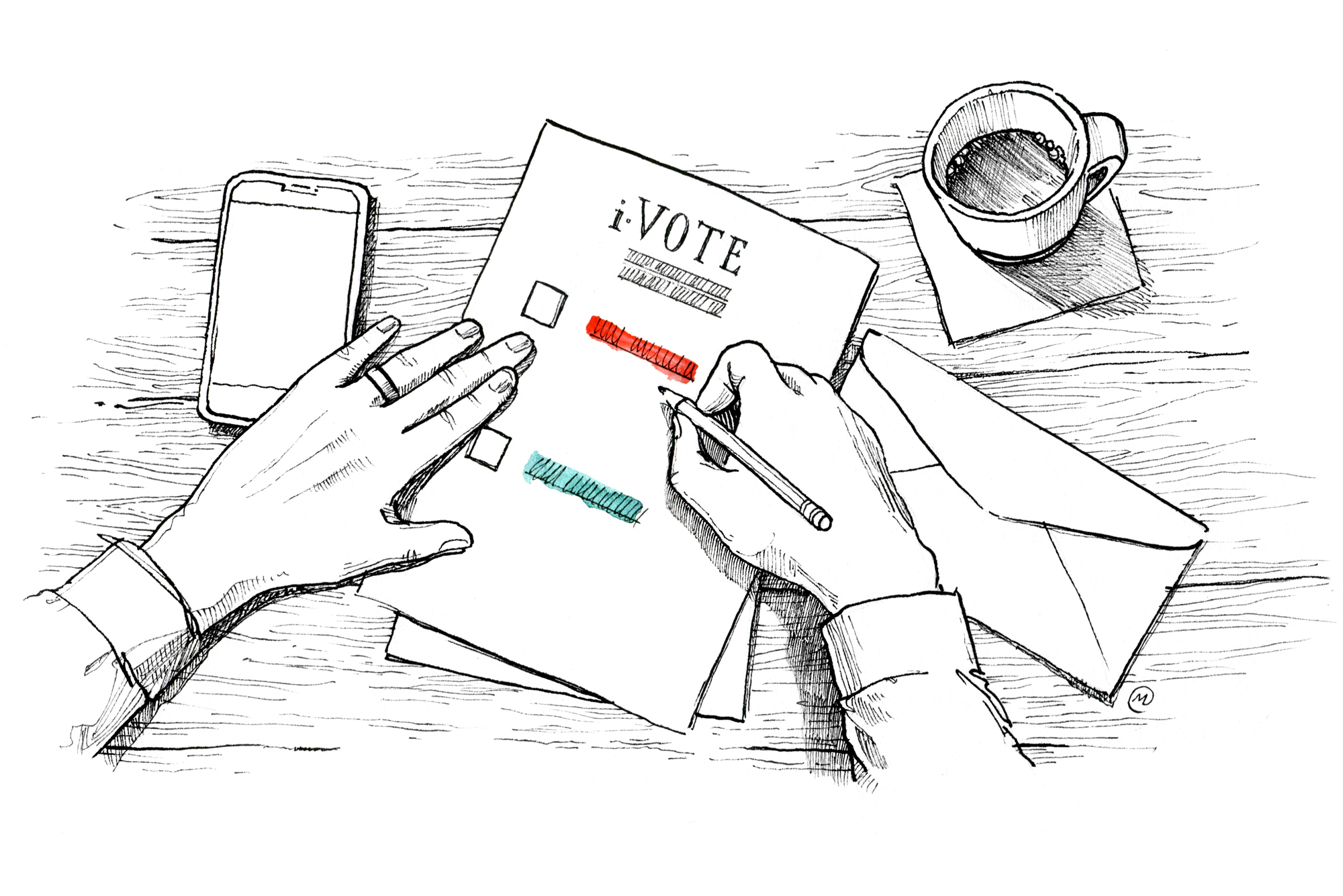
The 2024 global elections—the greatest test of democracy
by Surjit Singh Flora / 13 January 2024At least 64 nations (including the EU) are scheduled to hold national elections, drawing a total of more than 49% of the world's population. The outcomes of these elections will have far-reaching consequences for many, and more people than ever before are expected to cast their ballots.
Including the world's most powerful nations: India, the US, Britain, Russia, Ukraine, Mexico, Indonesia, and South Africa.
India, the world's biggest democracy, will elect its new government, as will. The election outcomes of these nations will likely shape the future.
In the spring of 2014, Narendra Modi, a leader of the Bharatiya Janata Party (BJP), took office as India's 14th prime minister. After ten years, it seems likely that he will secure a third consecutive term in office in what is set to be the biggest democratic event in history: 900 million voters will have the opportunity to select their next government.
President Joe Biden clearly divides the world into groups that are at odds with each other: democratic and authoritarian. He says this is the most important battle of our time. Many people around the world, starting with Putin and Xi, may think that democracy has failed if he fails to beat his likely Republican opponent, Donald Trump. Trump swears that he will not act like a ruler if elected, but it's clear that he can't wait to do so.
Regardless of whether or not Donald Trump is elected president, the voting and campaigning that will take place in the days leading up to November 5 have the potential to tear the fabric of democracy in the United States apart. And if he is elected, it has the potential to have repercussions that are felt throughout significant portions of the globe.
If Trump were to withdraw from NATO, what would the organization's structure be like? Consider the solace that would be provided to those who would completely dissolve the partnership.
As the European Parliament conducts its first election following Britain's exit from the European Union, the month of June will be a crucial period for the future of Europe. Many people anticipate that this election will cause a great deal of chaos.
The groundwork for a potentially enormous right-wing swing has been in the works for years, and it is quite likely that it will continue to grow into the year 2023. It is also possible that the European Conservatives and Reformists (ECR), which falls on the right side of the political spectrum, would become the third-largest party in the next European Parliament.
Such a group of resolute right-wingers and Euroskeptics has the potential to not only stymie a variety of moderate EU initiatives but also to stymie right-wing swings on the home front in key nations such as Germany and France.
However, Bangladesh will hold national parliament elections on January 7 to start the 2024 election cycle. Sheikh Hasina, the longest-serving female prime minister, is seeking a fourth term. Sheikh Hasina does not envisage huge competition since most major political parties are boycotting the polls and requesting a caretaker government for fair elections.
East Pakistan was forced to become a separate Bangladesh due to Pakistan's cultural-linguistic discrimination and military aggression; the National Assembly election is to be held there on February 8 this year. Pakistan is a victim of political instability after the popular cricketer-turned-politician Imran Khan was ousted from the post of Prime Minister.
While state assembly elections are underway, Imran is in jail, and his nomination papers have been rejected from both seats for breaching state secrets and selling prime ministerial gifts. Shehbaz Sharif took over after Imran, but his brother Nawaz Sharif returned after four years in exile to play another round while the caretaker government conducts elections. Imran's Tehreek-e-Insaf, Nawaz Sharif's PML-N, and Zardari's PPP compete. Allah and America don't know Pakistan Army stares at Sharif.
Talks of economic recession and debt traps are heard in many countries, but the whole world saw the economic crisis in Sri Lanka two years ago. At that time, people who were afraid of the government not only took to the streets but also entered the Rashtrapati Bhavan (the official residence of the president of India). President Gotabaya Rajapaksa had to resign.
Watching all-but-certain elections is worthwhile. Although Vladimir Putin is running for re-election, the March presidential election results, if they are revealed, may indicate the strongman's popularity and if the Russian populace continues to support his apparently continuous war. While Ukraine is under martial law, incumbent leader Volodymyr Zelensky has declared he wants another term, and his ratings are strong, but it's uncertain whether a 2024 presidential poll will take place.
The next president of Taiwan, for instance, will significantly influence Beijing's stance toward the self-governing island that it has flagrantly threatened to invade on many occasions.
Political governance in South Africa has been under the African National Congress (ANC) since 1994, when apartheid was abolished and Nelson Mandela assumed the historic role of the nation's first black president.
Corruption scandals involving government officials have unfortunately become all too common. Additionally, President Ramaphosa’ s decision to pardon his predecessor, Jacob Zuma, who refused to testify about corruption and state capture during his time in office, has raised concerns.
Outgoing President Andrés Manuel López Obrador's Morena party may select former Mexico City mayor Claudia Sheinbaum as Mexico's first female president. Yes, Taiwan will have elections in January, which is of global importance owing to China's tensions.
In the end, On top of that, there are all of the dictators and would-be dictators whom Trump has expressed his affection for. Trump used Putin as a source when he referred to Vice President Joe Biden as a "threat to democracy" when travelling through New Hampshire on his campaign path. On the same occasion, he expressed his admiration for Kim Jong Un, the leader of North Korea, as well as Viktor Orban, the extreme nationalist Prime Minister of Hungary.
In the event that Donald Trump were to become president, how may these verbal statements be put into practice? Javier Milei, the bombastic new radical-right president of Argentina, has proposed that the peso be replaced with the United States dollar while simultaneously taking a chainsaw to bureaucracy and budgets. After all, he has already committed to paying a visit to Milei by promising to do so.
The globe will be in a different place a year from now because of the billions of voters who will visit or avoid voting booths with differing degrees of freedom and transparency, as well as the leaders who will show the degree to which they respect the decisions that their people have made.
We can only hope that they will give due consideration and vote wisely.
Indeed! If Prime Minister Trudeau calls an election in Canada, who knows? But every Canadian knows who will win!
Surjit Singh Flora is a veteran journalist and freelance writer based in Brampton Canada

Green Energy: Can the Private Sector Be the Cure for India's Energy Appetite?
by Deekshitha S / 02 January 2024India's energy landscape has undergone a significant change in the past decade, to tackle the impending climate crisis. India will need an additional $300 billion to reach the goal of 500 GW of clean energy by 2030 (ADL report). As the transition to clean energy is capital-intensive, the cooperation of the private sector becomes increasingly important. Beyond tackling climate change, harnessing private capital for clean energy can unlock economic growth, generate green jobs, and enhance energy security.
With the government playing a catalytic role, investor confidence in India's clean energy future is soaring. Production-linked incentives and regulatory reforms have fueled a 40% rise in clean energy investment since 2020, boosting investor confidence (Times of India, 2022). A recent surge in renewable energy loans issued by banks and NBFCs further validates this trend. (Yoshino and Taghizadeh-Hesary, 2015).
To facilitate private sector participation in India's green energy ambitions, it becomes necessary to venture beyond mere capacity addition and dip into nascent technologies like green hydrogen, geothermal, ocean, and rooftop solar. Private investment in research and development, a skilled workforce, and technology transfers have become the need of the hour. India requires roughly $12 billion annually for clean energy R&D alone, highlighting the substantial gap that private participation can bridge (CEEW, 2023).
Furthermore, the rise of renewable energy generation makes effective energy storage solutions vital for addressing energy fluctuations and guaranteeing grid stability. Private companies can invest in and build pumped hydro plants, grid-scale batteries, or other storage solutions, creating a competitive market and driving down costs (Singh & Mukherjee, 2023). They can also develop innovative ownership models for storage facilities, such as community microgrids or energy storage as a service, ensuring wider accessibility and cost-sharing.
On the investment front, fostering innovative financial instruments like green bonds, climate-linked debt, and crowd-funding platforms can unlock substantial financial resources (Ghosh, 2022). While Adani has raised $1 billion through green bonds, Tata Power has raised $320 million via sustainability-linked loans, showcasing diverse funding options in the renewable space (Mint Genie).
Although India's private sector is stepping up, its debt burden remains a pressing concern, being 24-32% higher than developed economies like the US and Europe. Market concentration also poses a significant hurdle. The capital-intensive nature of solar and wind power has led to an oligopoly, with just 10 firms holding 60% of the total market share (Kunal B Fulewale, 2019). While the private sector's enthusiasm is encouraging, fostering a more open and inclusive market, along with managing the debt burden is crucial.
Beyond financial hurdles, land acquisition remains a major bottleneck, stalling projects due to its large footprint and local protests causing potential disruptions, like those in Nedan, Rajasthan. Moreover, acquiring fertile land raises food security concerns (Down to Earth, 2019). Complex logistics in remote areas add another layer of complexity and increase cost. These operational snags trigger a ripple effect, pushing up tariffs that in turn burden the state and discoms (Down to Earth, 2020). Establishing designated renewable energy zones with pre-approved land, robust infrastructure, and a streamlined permitting system could offer a solution for addressing these hurdles.
India's clean energy journey is not a solitary sprint; it's a collaborative marathon where the private sector's technical prowess and the government's supportive regulatory policies pave the path to a sustainable future. With a projected market size of $500 billion by 2030 (Times of India, 2023), India's renewable energy sector represents a significant and timely opportunity for private sector participation. This rapid growth presents a compelling avenue for investment and engagement in the future of clean energy.
Writer Deekshitha S is an engineer turned policy enthusiast.
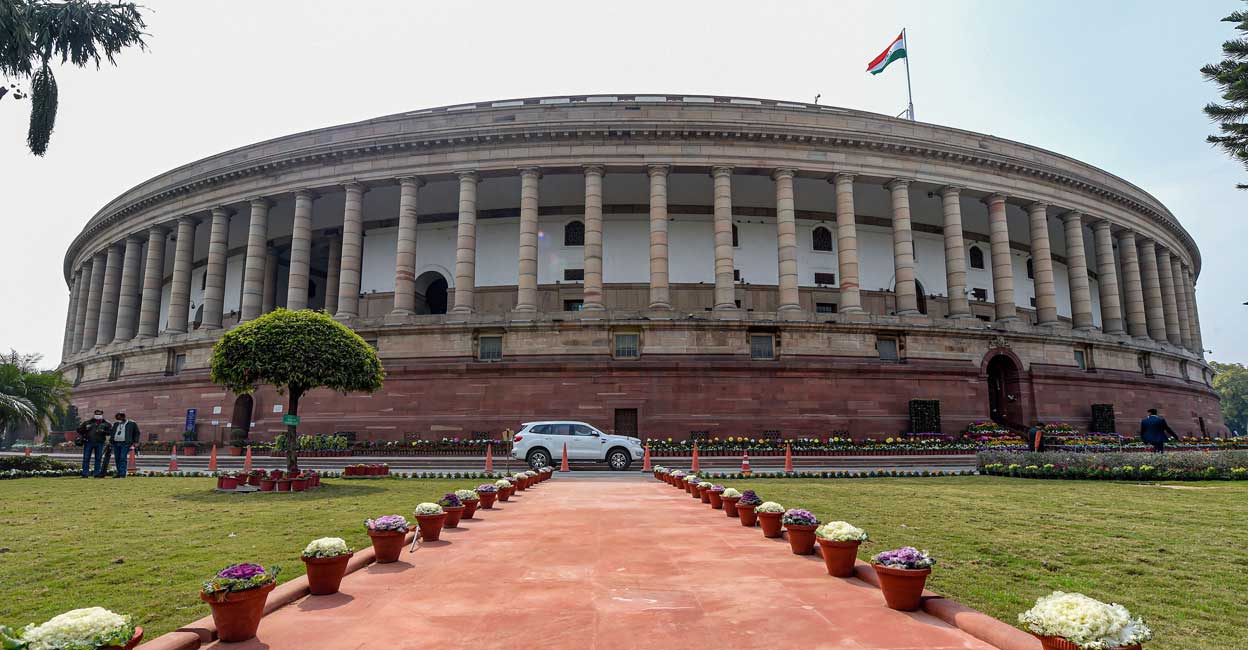
Indian Youth & Politics: Is the youth of today just the leader of tomorrow?
by Manan Singh / 01 January 2024The youngest country in the world, India, is often criticized for not having enough young parliamentarians. On one end dignitaries proudly state that when the world turns old, India will stay young, but on the other hand, only 6% of the Indian parliament comprises people below the age of 30. Thus, though the majority of the Indian population is young, it has near to no participation in the apex body that deals with policymaking. However, India does not fare very poorly in this regard in comparison to the world, as the youngest parliament in the world, Norway, has only 13.61% parliamentarians under the age of 30. Yet, this is not something to be satisfied with. 13% need not be the benchmark for a country like India, we must aim higher. It is a fair argument that parliamentarians and policy makers must be mature and experienced individuals but such an argument is not entirely satisfactory. The reason is that experience cannot be considered as an argument to negate the opinions and participation of nearly two-thirds population of our country.
One of the primary reasons for low youth participation is that the minimum age for an individual to be part of India’s highest legislative body is 25. Indeed, politics does not just mean being part of the government, rather it is a small part of it, but it is the one which creates the biggest impact on the society. The experience and maturity argument is brought back here. The general notion is that the youth must be trained and taught and they must learn by observing so that they are the leaders of tomorrow. Nelson Mandela once said, “The youth of today are the leaders of tomorrow.” As much as I agree with this quote of his, my question is, why are they just leaders of tomorrow and not considered leaders of today? Why is young age considered as a reason for presuming that an individual cannot have a large impact or is not mature enough to participate in policy-making and be part of a country’s decision-making body?
The youth is just awaiting an opportunity and the world will see them embarking on a journey of revolution and positive change. With every passing year, the involvement of youth in change-making is drastically increasing. The interesting thing is that most of these interventions are not because a particular opportunity was provided to the youth but because they saw the need to take action, took the initiative and achieved the goal successfully. Today, it is difficult to back a claim that the youth are not capable enough to be political leaders and do not possess the skill set to let them take an active part in politics. The youth is running their organizations, initiatives, companies, businesses, and forums and are bringing about a change in society by being leaders. In such a scenario, I fail to understand how they are pictured as not being of the right age to be leaders. This argument of the incapability of the youth to participate in politics makes less sense to me when I begin to think about India’s freedom movement. From revolutionaries like Shaheed Bhagat Singh to pioneer politicians like Jawaharlal Nehru and Netaji Subhas Chandra Bose began their active political careers in their early or mid-twenties. As much as the old leaders like Mahatma Gandhi are credited for India’s independence, the contribution of the youth is at par, if not more.
Another flawed argument in India to prevent youth participation in politics is that they are not interested in being part of politics. Reports tell that students studying subjects like polity, political science and international relations are at an all-time high in India. This rise is not just seen among men; rather reports also state that nearly 52% of the students studying political science in colleges in India today are women. Young people are opening think tanks and forums to have discussions on pertinent issues and are even involved in policy consultation. If you wish to witness an individual’s oratory skills, diplomatic ability and the promptness with policy of today’s youth, you must go and attend a Model United Nations (MUN) Conference or a Youth Parliament. Not just in UN committees like the Security Council and General Assembly, the youth has shown exemplary performance in committees like Lok Sabha, Rajya Sabha and All India Political Parties Meet. With their out-of-the-box thinking, diplomacy skills and new-age thought process, they have at times come up with extremely innovative and on-point suggestions on topics like the New Education Policy, Uniform Civil Code, etc. The current delegates of Youth20 (Y20) India are also a perfect example to analyze the leadership capabilities of Indian youth.
As the youth asks for a chance to be part of politics, they must also realize that with position comes greater responsibility. Not just the responsibility of making the world a better place to live in by creating stringent policies and ensuring that they are implemented but also by ensuring that they extend a hand to the upcoming generations. All the youth that do get the opportunity to be part of politics, it is their duty as well to pave a path for greater youth participation and also for mentoring the interested youth. Moreover, a know-it-all attitude will not be the most beneficial. A good leader must always listen and learn, that is what the youth will have to keep in mind. Doors for opportunities are gradually opening and the youth must make the most out of the opportunities provided.
Before concluding, an important aspect of youth’s involvement in Indian politics, I would like to highlight is diversity. When we say that the youth is the leader of today, which youth are we talking about? The majority of the Indian population continues to be rural or poor and largely uneducated. All the discussion we have had till now tilts towards the urban youth participating in politics and how they have been successful. The independence movement does come to our aid again, as we observe in the movement that all those who participated in politics even then were not educated but with the right guidance and training they could make the apt decisions as per requirement. Today, the numbers of young sarpanch in villages are also rising. Both men and women are taking an active part in not only central or state politics but also rural politics. This diversity of India is not to be ignored and greater attention needs to be paid to guiding rural youth and providing them with opportunities so that they do not get neglected.
This article poses a simple argument, why should youth be only taken as leaders of tomorrow in politics, when they possess the caliber to be leaders of today? Certainly, the right guidance and mentorship are required to compensate for the possible experiential lack, if any. The world must also understand that when they call out the youth for not having the experience, it is they who have not provided the youth with the right opportunities and space to gain experience, learn and grow. Countries like Rwanda, Kenya, and a few others have had this realization and have provided reservations for the youth in their parliaments to ensure consistent participation. Since time immemorial, youth has shown its capability of being a leader and its ability to embark on positive change. Most of these young leaders generally found senior leaders who were willing to groom them and let them be leaders of the present and the future. These mentors never told them to wait for 30 years and be considered mature at 45, to become a political leader. To state a few examples, Gopal Krishna Gokhale mentored Gandhi, Netaji Subhas Chandra Bose was mentored by Deshbandhu Chittaranjan Das, and the list goes on. Thus, existing leaders must also follow the decree and take up roles of mentors for young and aspiring leaders. I feel for this young India of today, for the young to be political will be a boon and it is time for the country to create an environment for the same. Today’s India is young and it deserves to be aptly represented and make decisions for the world they wish to live in. Youth has the potential and they must be allowed to be leaders of today, not be thought of only as leaders of tomorrow.
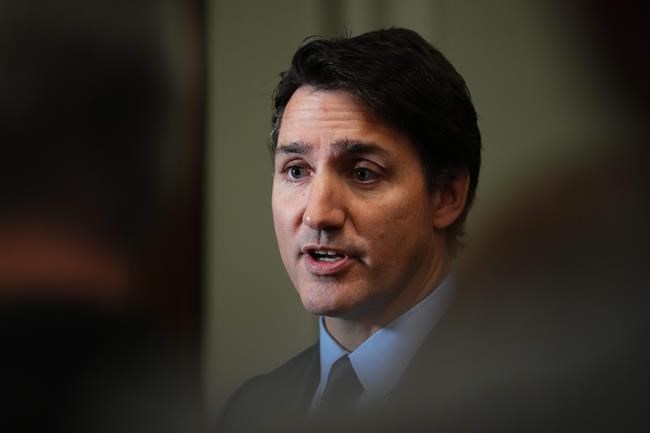
Canadians are paying the price for Trudeau’s overspending
by Surjit Singh Flora / 01 January 2024Starting on January 1, 2024, Canada will implement substantial changes to its study permit program for international students. These changes include a reduction in the number of study permits issued, limitations on working hours, and an increase in the financial requirement for study permit applicants. The cost-of-living financial requirement will be raised from the current amount of $10,000 to $20,635. Additionally, applicants will need to demonstrate sufficient funds to cover their first year of tuition fees and travel expenses. These adjustments aim to enhance the preparedness of international students for their lives in Canada. The minister asserts that the current situation has reached a point where further action is necessary.
Indeed, the truth is, these changes were made because there are too many students in Canada, no proper housing arrangements, no jobs, and Canadians, including foreign students, depend on food banks, while many food banks denied catering to international students last month. After that, many Canadians made noise about why these international students depended on food banks while Canadian immigration policy required $10,000 while they studied.
The blame lies with the government and loan companies that exploit students for visa money. The government will be increasing the student permit fee starting on January 1, 2024. Proof of funds is required annually along with tax returns. However, this is still insufficient. Once a student is approved for a study visa and arrives in Canada, they will repay the loan, and their bank account will be left with very little funds. The government must make it mandatory for them to provide proof of their bank statement every month to demonstrate that they have sufficient funds in their account.
Also, life's unpredictable, and while students sometimes need a helping hand so do we. Don't punish the good for the bad and the flawed.
However, Canada was once a popular destination for immigrants seeking to earn a living, but the situation has deteriorated due to these problems. From there, the immigrants have either chosen to move to other countries or return to their homeland. The number of immigrants entering Canada has been steadily rising since the 1980s, according to a recent survey by the Conference Board of Canada for the Institute for Canadian Citizenship (ICC), titled "The Leaky Bucket: A Study of Immigrant Retention Trends in Canada." This trend gained momentum in both 2017 and 2019, resulting in a significant 31 percent increase in average revenue. The number increased after COVID-19 as the economic condition of Canadians generally declined.
The Parliamentary Budget Office (PBO) has released their analysis of the Liberal fall minibudget, which can be summarized as follows: prices are increasing, debt is increasing, taxes are increasing, and time is running out. After eight years under Justin Trudeau's leadership, Canadians are facing the challenge of managing a significant increase in national debt, amounting to one hundred billion dollars. This surge in debt has contributed to higher inflation rates, resulting in a situation where the government's wealth has grown while the financial well-being of the general population has declined.
In their analysis, the PBO reported that the deficit will be $8.5 billion worse this year than the Liberals promised, meaning more Canadian tax dollars will be spent servicing interest costs on Trudeau’s debt. On top of this, they will add another $20.7 billion in inflationary debt, despite warnings from the Governor of the Bank of Canada that this will make everything more expensive.
Justin Trudeau’s uncontrolled spending will keep inflation and interest rates higher for longer, pushing already struggling Canadians over the edge. And this reckless spending risks a mortgage meltdown on the $900 billion of mortgages that will renew over the next three years.
Immigration and reverse migration hurt Canada's population balance. In 2010, 14.1% of Canada's population was 65 or older, according to Statistics Canada. By 2022, it had jumped to 19%. Migration disruption could fuel these trends. In 1966, 7.8% of Canadians were over 65. In 2022, it dropped to 3.4%, and by 2050, it will likely be below 3%. This affects government funds by having fewer taxpayers and more people relying on support. More elderly, more strain on healthcare.
Canada's aging population poses a big challenge for policymakers. Canada actively encourages young immigrants, offering various immigration options such as granting permanent resident status to international students after they finish their studies. This approach remains popular among policymakers. Canada will welcome 485K immigrants in 2024 and 500K in 2025. Canada welcomes skilled workers, temporary workers, and international students as immigrants. Each worker faces unique challenges. Skilled workers in Canada: excitement turns to challenges. Skilled individuals struggle to find suitable jobs and often settle for low-paying work to provide for their families.
America prefers to hire educated people, even if they do not have the same educational qualifications and experience as other immigrants.
The process of getting a license is quite complicated and expensive and takes a lot of time to complete. The influx of international students increased after Canada eased the rules to allow part-time work immediately after school admission. This also benefited the Canadian economy immensely. By 2022, more than 8 million study permit holders will be enrolled in educational institutions. In 2022, the contribution of international students to Canada's gross domestic product was estimated to reach $22 billion, helping to create nearly 200,000 jobs.
International students are usually paid the minimum wage, which helps small and retail entrepreneurs run their businesses. After completing two years of education and one year of work experience in Canada (1560 hours), a person is eligible to apply for Permanent Residence (PR) but the PR is awarded based on Comprehensive Ranking System (CRS) scores. goes CRS is a points-based system that is used to measure one's score and rank in the Express Entry pool.
The CRS score depends on language, education, work, and age. The CRS cut-off varies in each PR draw round. 2022 saw CRS scores ranging from 491 to 557. The cut-off price depends on applicants, scores, and housing decisions. On October 23, 2023, 214,873 applications were in the pool. Only 3,600 applicants with scores of 431 or higher were invited for the draw on October 26. Applicants must wait a long time to earn more points. They'll be temporary workers with a three-year permit. Earn extra points by getting a job offer or LMIA approval. There were few applications and many rejections.
The government sometimes lowers the CRS score requirement, like in 2021, when it dropped to 75, helping many applicants. Exemptions remain uncertain in terms of amount and timing. International students often go back home. Indian students wait and try various tactics to boost their CRS score, but it's not for everyone. CBC News reported that half of international students had no tax records after finishing their studies, indicating they likely went back home. According to an ICC survey that the same channel cited, 23% of educated new Canadians intend to leave the country in the next two years.
High living costs here make migrants give up on their dreams. Canada's inflation is squeezing wallets as wages remain stagnant. Canada offers immigration, refugee, and citizenship programs but lacks support for their long-term maintenance. The road to residency is a maze of rules and surprises.
Surjit Singh Flora is a veteran journalist and freelance writer based in Brampton Canada
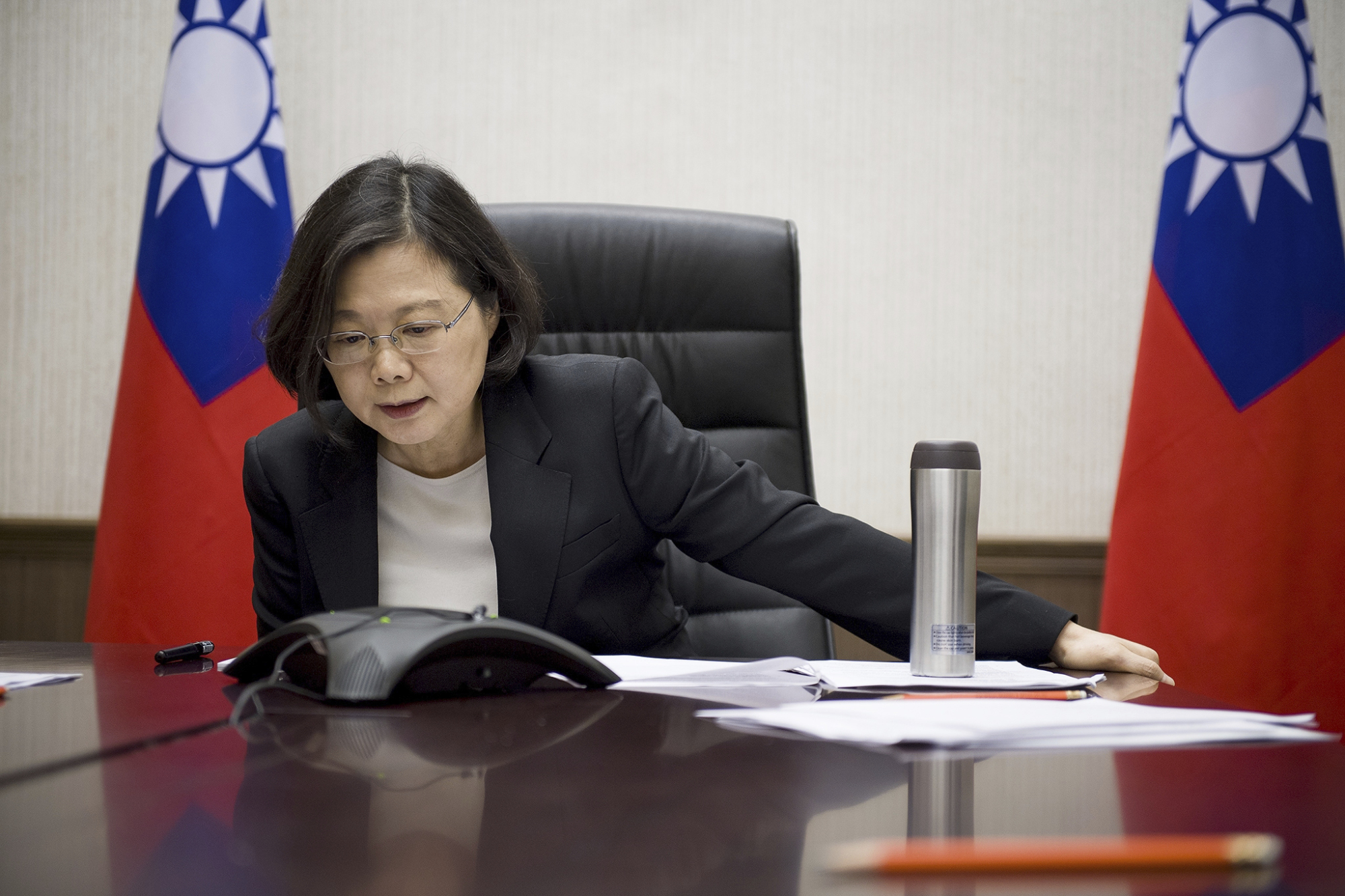
Stakes Rise as Taiwan Polls Elicit Diverse Opinions for Mainland China
by Prashant Tewari / 31 December 2023In the lead-up to Taiwan's presidential elections on January 13, 2023, candidates have expressed a desire for peaceful relations with Beijing, despite increased tensions and provocations from the Chinese government. The frontrunner, William Lai, who is currently Taiwan's vice president from the ruling Democratic People's Party, stated during a televised debate that he is open to communication with the government in Beijing. However, Beijing has refused to engage in dialogue with Lai and President Tsai Ing-wen, accusing them of separatism and attempting to provoke a Chinese attack on Taiwan.
China has shown a preference for the more China-friendly Nationalist Party, or Kuomintang, candidate, Hou Yu-ih. Despite the historical endorsement of unification with China by the Kuomintang, recent shifts reflect Taiwan's electorate increasingly identifying as Taiwanese rather than Chinese. Hou expressed a commitment to peaceful relations with Beijing while rejecting Taiwan's independence and opposing potential unification under China's "one country, two systems" framework, as seen in Hong Kong.
The third candidate, Ko Wen-je from the Taiwan People's Party, emphasized a pragmatic approach to Taiwan-China relations. He referenced a quote by US Secretary of State Antony Blinken, suggesting cooperation, competition, or confrontation based on the circumstances. Ko highlighted the shared history, language, religion, and culture of the people on both sides of the Taiwan Strait but underscored the importance of Taiwan maintaining its current democratic and free political system.
Tensions between Taiwan and China have manifested in increased military pressure, with China sending jets, ships, and even espionage-capable balloons near the island. The United States, bound by law to provide Taiwan with necessary defense, closely monitors developments, as differences over Taiwan remain a significant flashpoint in US-China relations.
As the elections approach, the candidates are navigating a delicate balance between expressing a willingness for dialogue with Beijing and safeguarding Taiwan's autonomy and democratic way of life. The international community is closely watching these developments and preparing to respond to potential escalations in the region.
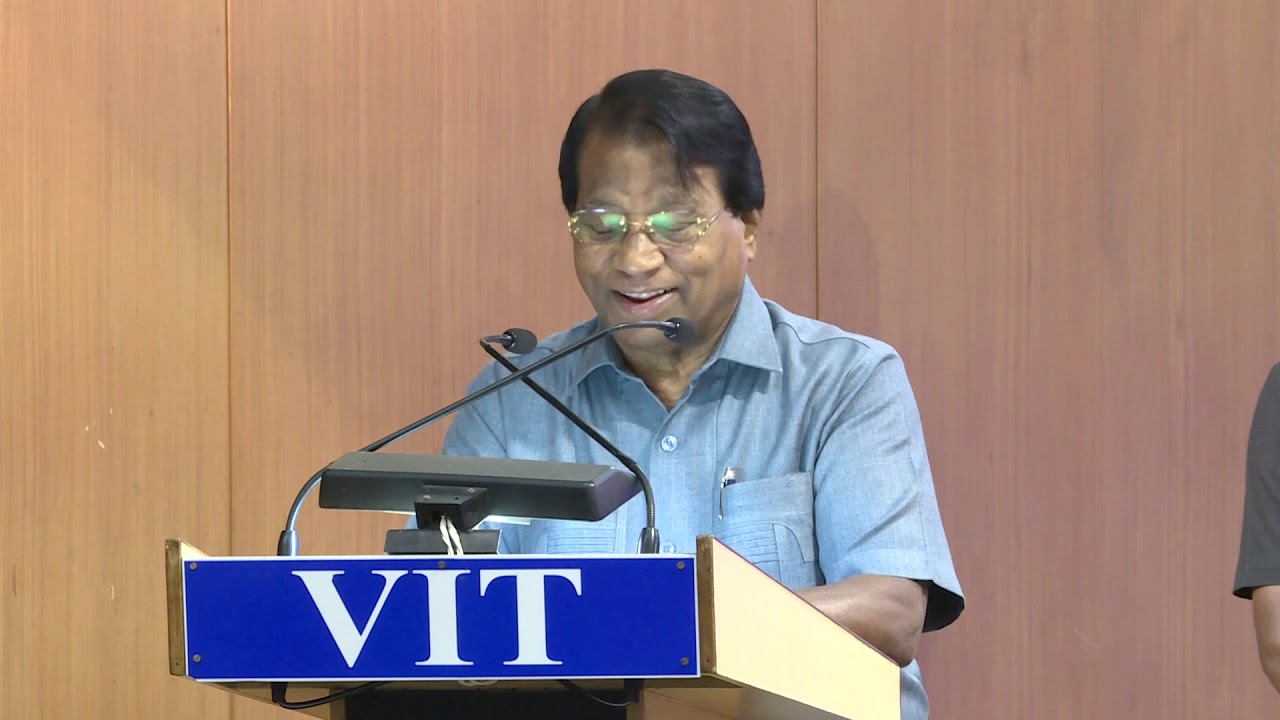
VIT Thrusts India's Intellectual Prowess onto the Global Stage
by Prashant Tewari / 12 December 2023VIT University, popularly known as Vellore Institute of Technology, has undoubtedly played a transformative role in shaping the educational landscape of India and contributing significantly to the nation's growth story. The institution's journey to becoming a global leading intellectual hub is closely intertwined with the vision and leadership of its founder, Dr. G. Viswanathan. His visionary approach, commitment to excellence, and entrepreneurial spirit have not only propelled VIT to great heights but also positioned him as a role model for the next generation of entrepreneurs.
Over the years, the institution has evolved into a comprehensive university with a global reputation for academic excellence, innovation, and research. The transformation of VIT into a hub of intellectual activity can be attributed to several key factors.
Academic Excellence: VIT has consistently focused on providing high-quality education, adapting to changing industry needs, and fostering a culture of innovation. The university offers a wide range of undergraduate, postgraduate, and doctoral programs in engineering, technology, science, business, and humanities. The curriculum is regularly updated to incorporate the latest developments in various fields, ensuring that students receive relevant and contemporary education.
Research and Innovation: VIT has placed a strong emphasis on research and innovation. The university has established research centers and laboratories equipped with state-of-the-art facilities to facilitate cutting-edge research. Faculty members and students are encouraged to engage in research activities, leading to numerous publications, patents, and collaborations with industries.
Global Collaborations: VIT has actively pursued collaborations with renowned international universities and research institutions. These collaborations have not only enhanced the global exposure of VIT students but have also facilitated knowledge exchange and collaborative research projects. Such global linkages contribute to making VIT a truly international intellectual hub.
Infrastructure and Facilities: The promoters recognized the importance of providing world-class infrastructure to support academic and research endeavors. VIT boasts modern classrooms, well-equipped laboratories, libraries, and recreational facilities. The emphasis on a conducive learning environment has attracted students from across the country and around the world.
VIT's Impact on the Indian Growth Story
VIT University's contributions to the Indian growth story are multifaceted and extend beyond the boundaries of traditional education. The institution has played a crucial role in:
Human Resource Development: VIT has consistently produced a pool of highly skilled and qualified professionals across various disciplines. These graduates contribute to the workforce, driving innovation, and serving as catalysts for economic growth. The emphasis on industry-relevant education ensures that VIT alumni are well-prepared to meet the demands of a dynamic and evolving job market.
Innovation and Entrepreneurship: The culture of innovation and entrepreneurship fostered at VIT has given rise to numerous successful startups and ventures. Graduates are encouraged to think creatively, identify opportunities, and take risks – essential qualities for any entrepreneur. The impact of VIT alumni in the startup ecosystem reflects the institution's role in shaping the entrepreneurial landscape of the country.
Research and Development: VIT's commitment to research and development has contributed to advancements in various fields. The university's research output has practical implications for industries, leading to the development of new technologies, products, and solutions. This R&D focus aligns with the government's emphasis on innovation and technology-driven growth.
Global Recognition: VIT's collaborations with international institutions and its global alumni network have enhanced India's standing in the global academic arena. The exchange of ideas, knowledge, and research findings on an international platform elevates India's reputation as a hub of intellectual activity and innovation.
VIT - A step ahead in innovation
In the dynamic landscape of higher education and research, VIT (Vellore Institute of Technology) stands out with its forward-thinking approach and commitment to cutting-edge innovation. The institution's innovation policy serves as a blueprint for fostering creativity, research excellence, and technological advancements. Let's delve into the key aspects that define VIT's cutting-edge innovation policy.
To incentivize and celebrate innovation, VIT has incorporated a system of recognition and rewards into its innovation policy. Outstanding contributions to research, technology transfer, and entrepreneurial endeavors are acknowledged and rewarded. This not only motivates individuals and teams but also creates a culture where innovation is celebrated as a cornerstone of academic excellence.
In conclusion, VIT's cutting-edge innovation policy exemplifies the institution's dedication to shaping the future of education and research. By fostering a culture of research, interdisciplinary collaboration, industry integration, and ethical innovation, VIT positions itself as a leader in the global academic landscape. As the institution continues to evolve, its innovation policy remains a guiding force, ensuring that VIT remains at the forefront of advancements that positively impact society and contribute to the global pool of knowledge.
Dr. G. Viswanathan: A Role Model for GenNext Entrepreneurs
Dr. G. Viswanathan's journey as the founder and chancellor of VIT University serves as an inspiring story for budding entrepreneurs. Several qualities and principles embodied by Dr. Viswanathan make him a role model for the next generation of business leaders:
Vision and Ambition: Dr. Viswanathan's vision to create a world-class educational institution and his ambition to position VIT on the global stage reflect the importance of having a clear vision and ambitious goals. Entrepreneurs can learn from his ability to envision the future and work tirelessly to turn that vision into reality.
Adaptability and Innovation: The ability to adapt to changing circumstances and embrace innovation is a hallmark of successful entrepreneurs. Dr. Viswanathan's proactive approach to introducing new programs, embracing emerging technologies, and adapting the curriculum to industry needs demonstrates the importance of staying ahead of the curve.
Commitment to Excellence: Dr. Viswanathan's unwavering commitment to excellence in education, research, and infrastructure sets a high standard for entrepreneurs. Striving for excellence in every aspect of business operations is a key lesson that aspiring entrepreneurs can take away from VIT's success story.
Global Perspective: In an increasingly interconnected world, having a global perspective is crucial for success. Dr. Viswanathan's efforts to establish international collaborations, participate in global forums, and create a diverse and inclusive environment at VIT showcase the importance of thinking globally for long-term success.
Social Responsibility: Beyond business success, Dr. Viswanathan's commitment to social responsibility is evident in VIT's initiatives in community development, education outreach, and philanthropy. Entrepreneurs can draw inspiration from the idea of business success.
Prashant Tewari Editor-in-Chief Opinion Express
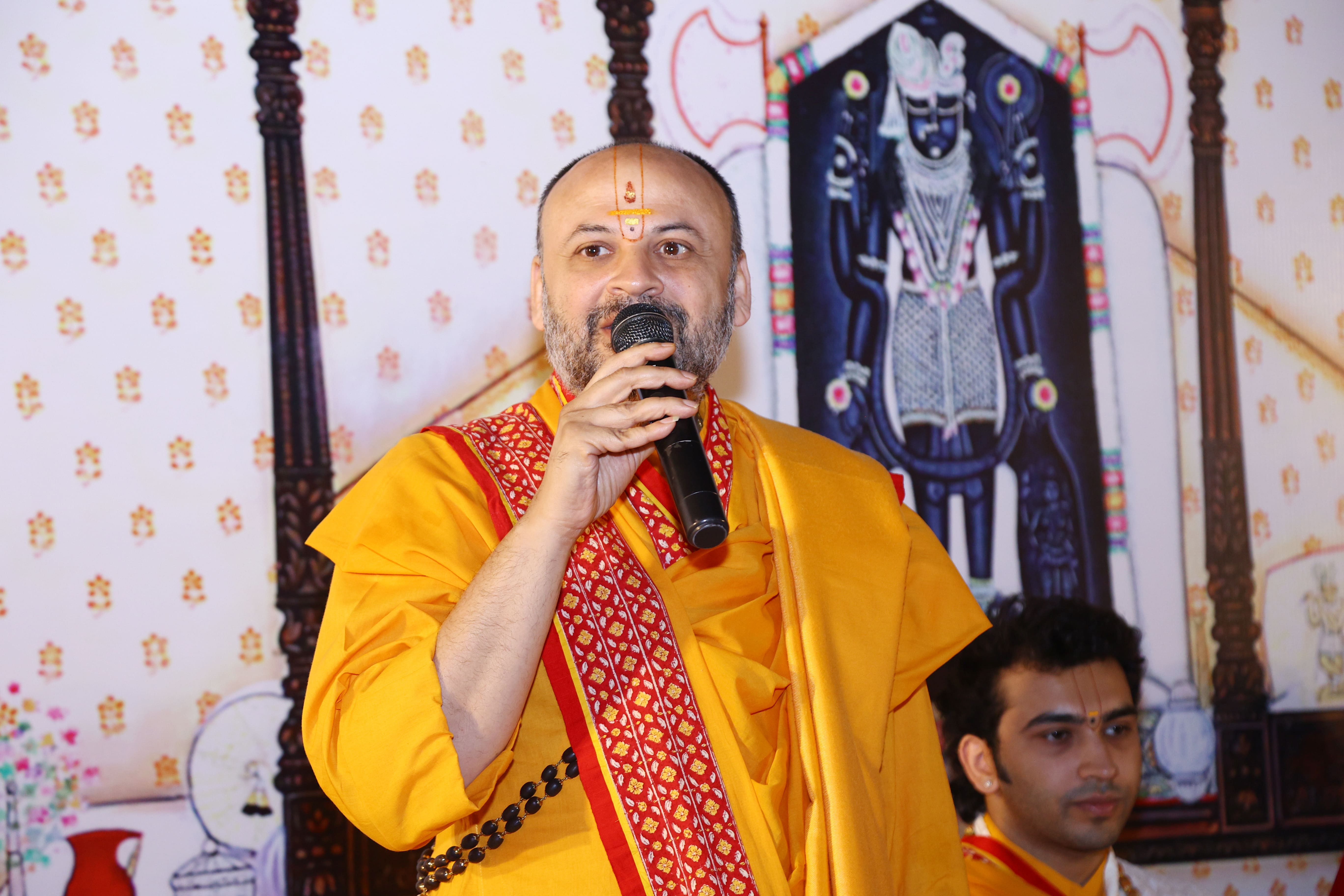
Swamy Dwarkeshlalji Stresses the Role of Ultimate Devotion in Attaining Salvation
by Prashant Tewari / 31 October 2023Swamy Vallabhachari, a revered philosopher of Dvaita Vedanta, was a luminary whose teachings have transcended boundaries and impacted the lives of millions around the world. Rooted in the rich Dvaita Vedanta tradition of India: his disciple, descendent Dwarkeshlalji's profound wisdom and knowledge have served as a guiding light for spiritual seekers while contributing to a deeper understanding of the human experience.
Dvaita Vedanta, the school of thought to which Dwarkeshlalji belongs, is a branch of Indian philosophy that emphasizes the duality of the self (atman) and the ultimate reality (Brahman). It was founded by the celebrated philosopher Swamy Vallabhachari, and it posits that the individual soul is eternally separate from the supreme divine. Dwarkeshlalji, a prominent figure within this tradition, inherited and disseminated the profound teachings of Dvaita Vedanta, with a contemporary approach that resonates with a global audience.
Dwarkeshlalji Maharaj from an early age had an innate spiritual inclination, and he demonstrated a deep thirst for knowledge and wisdom. He embarked on his spiritual journey under the guidance of his guru, and it was here that he immersed himself in the teachings of Dvaita Vedanta. His commitment to his studies, coupled with his genuine love for humanity, set the stage for the transformative work that he has undertaken over the years.
One of the most distinctive features of Dwarkeshlalji's philosophy is his ability to bridge the gap between ancient wisdom and contemporary life. He possesses a rare gift of making complex philosophical concepts accessible to people from diverse cultural backgrounds. His teachings emphasize the practical application of Vedantic principles in everyday life, promoting the idea that spirituality is not an isolated pursuit but should permeate every aspect of our existence.
Dwarkeshlalji's message resonates with a wide range of audiences, both in India and abroad. His ability to connect with individuals from different walks of life is a testament to his universal approach to spirituality. He recognise the core principles of Dvaita Vedanta could serve as a guiding light for anyone seeking deeper meaning and purpose in their lives. His teachings transcended religious and cultural boundaries, welcoming people of all backgrounds to embrace his philosophy.
One of the cornerstones of Dwarkeshlalji's teachings is the concept of 'Bhakti,' or devotion. He professes devotion to a personal deity that could serve as a powerful means of achieving spiritual realization. Through his lectures and writings, he encourages individuals to develop a deep, personal connection with the divine. His emphasis on devotion as a path to spiritual growth was both inspirational and practical, offering a tangible way for people to connect with the divine.
Dwarkeshlalji's impact on the lives of his followers is profound. Many who came into contact with his teachings experienced a profound transformation in their perspectives and behaviors. He encourages his followers to lead lives infused with compassion, integrity, and a sense of purpose. His emphasis on ethical conduct and selfless service, rooted in the teachings of Dvaita Vedanta, guided countless individuals toward a more meaningful and fulfilling existence.
In addition to his work in India, Dwarkeshlalji embarked on several global tours to spread his message. His ability to communicate in multiple languages and his deep understanding of the human condition allowed him to connect with people from different parts of the world. His global outreach expanded his reach, and his message began to resonate with people from diverse backgrounds.
One of the enduring living legacies of Dwarkeshlalji is the philosophical literature he is producing regularly. His writings encompassed a wide array of topics, from the fundamental principles of Dvaita Vedanta to the practical application of spiritual teachings in daily life. These writings, often in the form of books, articles, and discourses, continue to serve as valuable resources for seekers and scholars alike. They provide insight into his profound understanding of the Vedantic tradition and his ability to adapt these ancient teachings to contemporary challenges.
Dwarkeshlalji has established ashrams and spiritual centers, both in India and abroad, where seekers could gather to study, meditate, and engage in spiritual practices. These centers became hubs of spiritual learning, fostering a sense of community among his followers. They continue to thrive, serving as beacons of spiritual wisdom and guidance for those on the path of self-realization.
In addition to his philosophical teachings, Dwarkeshlalji is renowned for his philanthropic efforts. He recognized the importance of giving back to society and believed that spirituality should be inseparable from acts of kindness and service. His charitable initiatives, including providing food and education to the underprivileged, and his efforts to promote environmental awareness, demonstrated his commitment to the well-being of humanity and the world at large.
Dwarkeshlaji's teachings continue to inspire and guide countless individuals. His followers have organized numerous events, seminars, and conferences to celebrate his life and work. These gatherings provide a platform for the exchange of ideas and the exploration of the profound wisdom he shared.
The impact of Dwarkeshlalji's teachings on the lives of his followers is immeasurable. Many attest to the transformative power of his philosophy, which has enabled them to navigate life's challenges with grace, equanimity, and a deeper sense of purpose. His emphasis on self-realization, ethical conduct, and devotion has allowed individuals to lead lives filled with inner peace and contentment.
Dwarkeshlalji's work is a testament to the enduring relevance of ancient philosophical traditions in the modern world. His ability to adapt these teachings to contemporary contexts and to reach out to a global audience highlights the timeless nature of spiritual wisdom. He showed that the pursuit of self-realization is not limited to any particular culture, religion, or geographical location, but is a universal aspiration shared by humanity as a whole.
Dwarkeshlalji, a philosopher of Dvaita Vedanta, stands as a remarkable figure who has touched the lives of millions around the world. His teachings, rooted in the profound wisdom of the Vedantic tradition, offer a path to self-realization, ethical living, and devotion to the divine. His ability to bridge the gap between ancient philosophy and modern life has made his message accessible to people from diverse backgrounds. His living legacy continues to thrive through his writings, spiritual centers, and the transformative impact he has had on the lives of his followers. Dwarkeshlalji's work reminds us that the quest for spiritual realization is a universal journey, and his contemporary teachings continue to be a source of inspiration and guidance for all who seek a deeper understanding of the self and the ultimate reality.
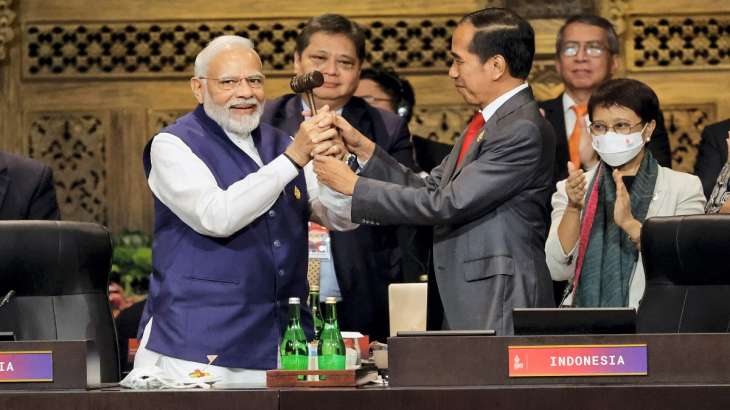
The Geopolitical Shifts of Our Time
by Aayush Kumar / 26 October 2023In 2020, the European Union's External Affairs Minister, Josep Borrell, expressed the idea that COVID-19 would reshape the world order and it will bring about significant changes. As we now stand in 2023, the global geopolitical landscape has indeed transformed, influenced by a variety of factors.
The COVID-19 pandemic exposed the weaknesses in global governance, particularly in the realm of public health. It also contributed to a shifting balance of power, with China and Asia gaining prominence on the global stage. The United States' trajectory has been affected by the pandemic, and the competition for global influence between the USA and China, along with Russia's role, has become a dominant factor.
This new world order is characterized by changes in over-consumption, global value chains, globalization, and our relationship with nature. Global supply chains are being reconfigured, with new alliances forming and industries relocating to different destinations. For example, the "China+1" policy is leading to considerations of India and Vietnam as attractive destinations due to their cost-effective labor and favorable business environments.
The Russia-Ukraine conflict has had a significant impact on the geopolitical landscape. The expansion of NATO and a stronger US-Europe partnership raised concerns in Russia, leading to its invasion of Ukraine. Russia's global isolation has pushed it closer to China. Similarly, the Israel-Palestine conflict highlights the volatility in West Asia, with Iran seeking closer ties with China. These developments emphasize the polarization of the world, requiring India to navigate diplomatic challenges to protect its national interests.
India's role in this evolving world order is of great interest. The successful hosting of the G-20 Leader's Summit in 2023 and the "New Delhi Declaration" underscored India's importance. The US and the West have recognized India's role in the Indo-Pacific for maritime security and countering Chinese influence. India's historical ties with Russia also position it as a potential bridge between Russia and the West. By attracting investments in manufacturing and serving as a global supply chain hub, India can play a significant role in sustainable development and global progress, in line with the principles of "Vasudhaiva Kutumbakam" (One Earth, One Family, One Future).
(Writer is Alumni & Scholar, St. Stephen’s College, New Delhi)
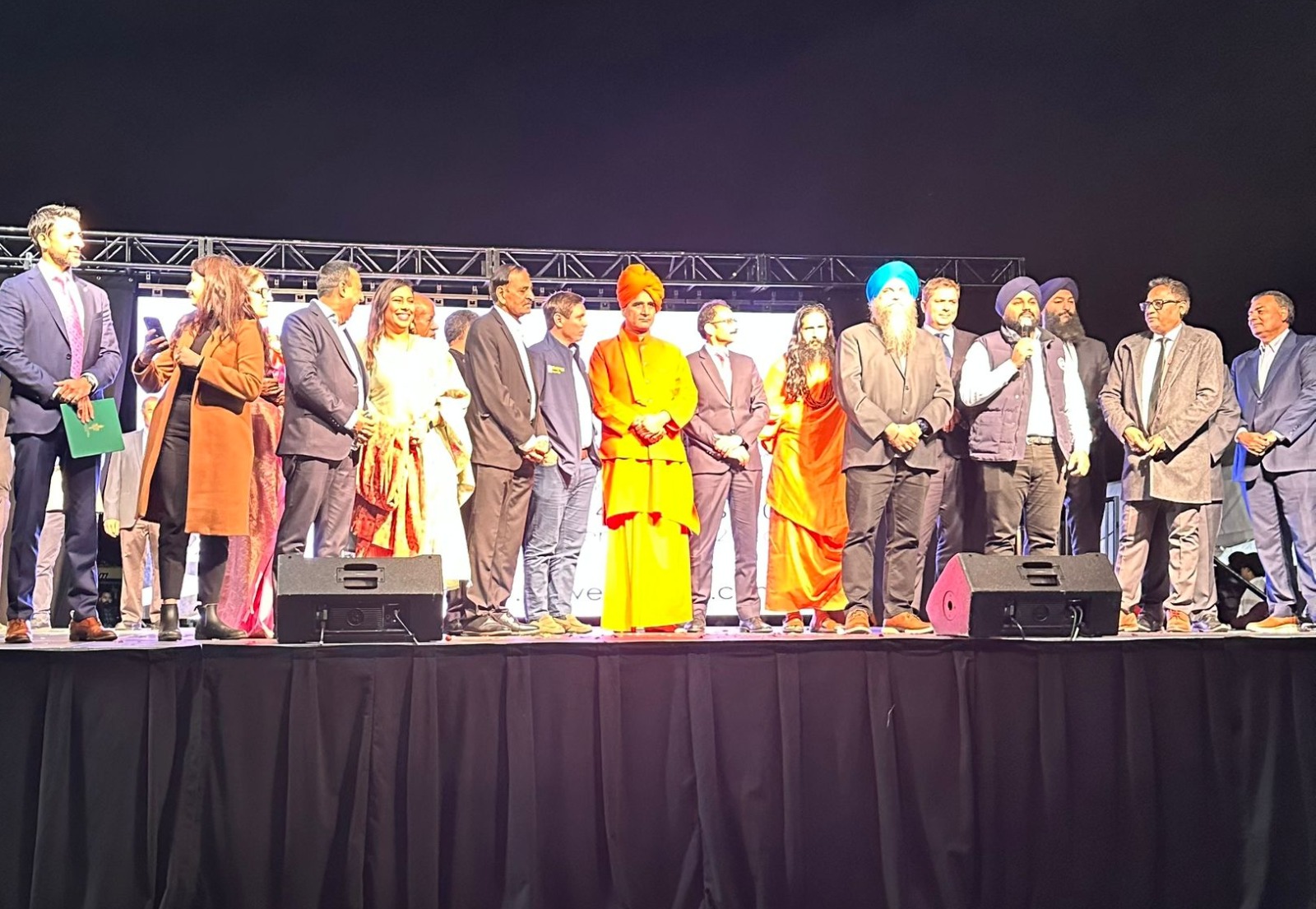
How to Transform Ravan's 10 Sins into Virtues: Swami Advaitananda Giri
by Opinion Express / 26 October 2023Indo-Canadians came together in remarkable numbers to joyously celebrate Dussehra. Festive commemorations took place in numerous temples across the region, with Brampton's Hindu Sabha temple being a focal point of the grandeur. A staggering crowd of over ten thousand individuals graced this auspicious occasion. The Indian diaspora converged in Brampton, where they relished the vibrant re-enactment of Ram Leela and the symbolic burning of Ravan's effigy, all set against the backdrop of a spectacular fireworks display.
Speaking at the event Kamal Khera, Minister of Diversity, Inclusion, and Persons with Disabilities of Govt. of Canada said “As Hindus in Canada and across the world break their fast as Navratri ends, I wish everyone celebrating a very Happy Dussehra! This joyous celebration marks the victory of good over evil and the triumph of righteousness, symbolized by the victory of lord Rama over the demon Ravana.”
Patrick Brown, Mayor of Brampton said “Jai Shri Ram, wishing Brampton a prosperous Dussehra this evening. The turnout is incredible. May the triumph of good over evil inspire us all.”
Ruby Sahota, Member of Parliament, Brampton North stated that It's an absolute pleasure to celebrate Dussehra with the community in Brampton; Dussehra is a major Hindu festival celebrating the victory of good over evil. Like past years, this year, the Hindu Sabha Mandir entertained the thousands of people in attendance with a beautiful rendition of Ramlila, a dramatic performance of the story of Lord Rama, teaching the harm of letting one’s vices take control. At the end of the play an effigy of the demon Ravana, built 4 stories high was lit on fire, signifying the victory of Lord Rama.
Swami Advaitananda Giri, Chairman of, the International Meditation Foundation explained that “The ten heads of Ravan are symbolic and they are interpreted as Ego, Lust, Anger, Greed, Attachment, Selfishness, Jealousy, Arrogance, Ignorance & Injustice.
Meditation practices can be a transformative path to convert the ten sins associated with Ravana into ten virtues. Through deep introspection and mindfulness, individuals can dismantle their ego by recognizing the interconnectedness of all beings. Lust can be transmuted into a deep appreciation for the beauty of life without attachment. Anger can be replaced with inner peace and emotional balance. Greed can be replaced by contentment and generosity. Attachment can transform into detachment, allowing one to let go gracefully as explained by Swami Advaitananda Giri.
Swami Advaitananda Giri further stated “Selfishness can be dissolved by cultivating selflessness. Jealousy can be overcome through practicing gratitude and celebrating others' successes. Arrogance can be humbled by recognizing our inherent limitations. Ignorance can be dispelled through knowledge and wisdom gained from meditation. Injustice can be replaced by a commitment to fairness and compassion towards all. Ultimately, meditation fosters self-awareness and helps individuals cultivate virtues that align with a more harmonious and compassionate way of living.”
Swami Advaitananda Giri, who advocated for the inclusion of universal human values in India’s National Education Policy 2020, suggested that Canada and other part of the world should also make Universal Human Values as part of their education curriculum. In America, US CDC 2021 reports that 32.4% overall population is affected with Anxiety or Depression disorders, out of this 46.6% of youth in the age group of 18-29 were also reported to be affected with Anxiety or Depression disorders.
A serious question arises If 32.4% population is having serious mental health issues like anxiety or depression then It can be safely presumed that to have an anxiety or depression rate of 32.4 %, there must be a need for at least 3 times more sad people in the population, this leads to 32.4% x 3 = 97.2% of the total population. If 97.2% population is sad then there is a likelihood that 99% population must be experiencing the emotions of worry, fear, the feeling of failure, etc... The feeling of worry forms the basis of sadness, sadness leads to anxiety or depression, and further anxiety or depression results in the very serious act of suicide or violent behavior.
Depression or anxiety doesn’t occur directly. It is caused in progressive stages out of the feeling of sadness or dejection etc… As the sadness or dejection type of emotions deepens then only it will take the shape of depression or anxiety, not straightway. This means that depression or anxiety is an outcome of the prevalence of sadness among the larger population. For example, if one person has been diagnosed with depression or anxiety that means behind this there must be at least three people or more who were already experiencing sadness or dejection type of emotional imbalance explained Swami Advaitananda Giri.
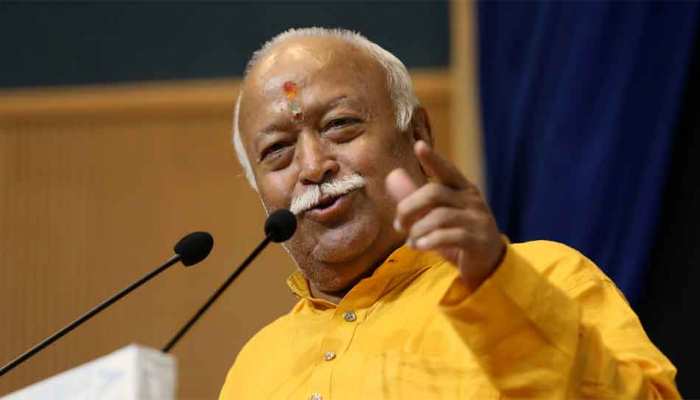
Bharat Has Been A Secular Nation: RSS Chief
by Opinion Express / 12 October 2023RSS Chief Mohan Bhagwat spoke at an event where he emphasized the secular nature of India for the past 5,000 years and urged unity and exemplary human behavior. This event marked the launch of a book titled 'Prithvi Sookta - An Ode To Mother Earth,' authored by senior RSS functionary Ranga Hari. Bhagwat stressed the importance of devotion, love, and dedication to the motherland, asserting that the nation is an essential component of national unity.
He declared that India's 5,000-year-old culture has inherently been secular, and this conclusion is derived from the knowledge of elements. He pointed out that the core Indian belief is that the entire world is one family, emphasizing that this concept isn't theoretical but should be known, understood, and practiced in behavior.
Bhagwat highlighted the remarkable diversity in India and called upon the people not to engage in internal conflicts. He urged Indians to make their country a model for the world, showcasing unity. He emphasized that India's existence should be driven by the sole purpose of promoting global welfare.
He also recognized the significant role of seers in shaping India. According to him, these seers created a society dedicated to imparting knowledge to every individual in the country. Contrary to the popular perception of seers as ascetics, Bhagwat highlighted that they lived as wanderers with their families, and their knowledge extended to various aspects, including ayurveda. He added that the descendants of these early seers still exist today, contributing to society and preserving their cultural heritage.
Bhagwat underscored the historical role of Indian people in disseminating knowledge worldwide, stating that Indian knowledge reached far corners of the globe, from Mexico to Siberia.
In summary, Mohan Bhagwat's speech at the book launch event celebrated India's secular heritage, unity in diversity, and the timeless wisdom of Indian seers. He called for the country to set an example for the world through its unity and harmonious existence, highlighting that the nation's purpose is to serve the well-being of humanity.
FREE Download
OPINION EXPRESS MAGAZINE
Offer of the Month





